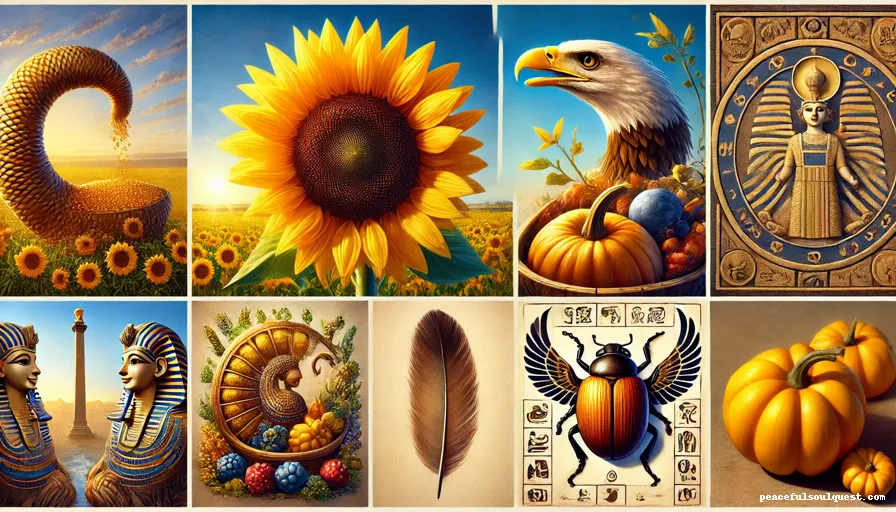Symbols of Gratitude are like tiny sparks that ignite joy and appreciation in our lives.
Whether it’s a sunflower turning towards the sun or a simple smiley face, these symbols remind us to stay thankful.
Curious about the hidden meanings behind these symbols? Stick around; the answers might surprise you!
What is Gratitude?
Gratitude is a powerful emotion that goes beyond just saying “thank you.” It’s about recognizing and appreciating the good things in life, whether they are big or small.
This feeling of thankfulness can be directed towards people, nature, the universe, or even oneself. In essence, gratitude is the act of acknowledging the positive aspects of our lives.
When we talk about Symbols of Gratitude, we’re referring to the various ways people express this emotion visually or symbolically.
These symbols can be found in different cultures and histories, each carrying unique meanings and importance. They help us convey our appreciation in a more profound, lasting way.
Importance of Expressing Gratitude
Expressing gratitude is more than just polite behavior; it’s essential for mental well-being. Research shows that practicing gratitude can significantly improve emotional health, fostering a sense of happiness and reducing stress.
When we express gratitude, we strengthen our connections with others and create a more positive environment. Symbols of Gratitude play a crucial role in this process.
They act as reminders of the importance of being thankful and help us maintain a grateful mindset.
By surrounding ourselves with these symbols, we keep the positive energy flowing, which in turn enhances our overall well-being.
The Role of Symbols in Conveying Gratitude
Symbols of Gratitude are powerful tools that help us express our thankfulness in a universal language. Unlike words, which can sometimes fall short or be misunderstood, symbols transcend language barriers.
They convey deep feelings of appreciation in ways that resonate across different cultures and societies. For example, a simple gesture like the open hand can symbolize giving and receiving blessings, a core aspect of gratitude.
By using symbols, we communicate our gratitude more effectively and meaningfully. These symbols not only represent our emotions but also serve as daily reminders to practice gratitude regularly.
Overview of the Article
In this article, we will explore various Symbols of Gratitude from different historical and cultural perspectives. We will explore how ancient civilizations used these symbols to express their thankfulness.
We’ll also examine modern interpretations and how these symbols are still relevant today. The goal is to understand the significance of these symbols and how they can enhance our practice of gratitude in everyday life.
By the end of the article, you’ll have a comprehensive understanding of how gratitude has been symbolized throughout history and how you can incorporate these symbols into your life.
Historical and Cultural Perspectives on Gratitude Symbols
Ancient Civilizations and Gratitude
Ancient civilizations had unique ways of expressing gratitude, often through symbols that were deeply embedded in their cultures.
1. Cornucopia (Greek mythology)
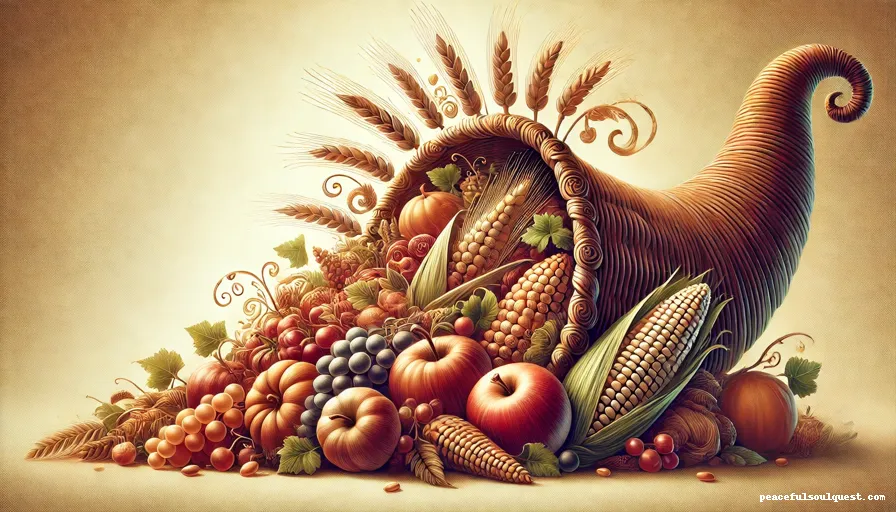
For example, the Cornucopia in Greek mythology symbolizes abundance and is often associated with gratitude for the harvest. This horn-shaped container overflowing with fruits and vegetables represents the earth’s bountiful gifts.
2. Eagle Feather (Native American culture)
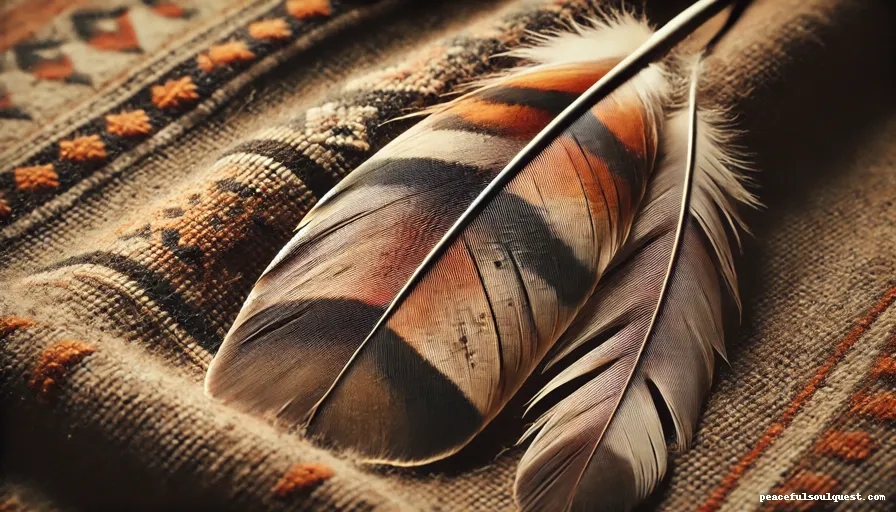
Similarly, Native Americans used the eagle feather as a symbol of strength and gratitude. The eagle, revered for its majestic flight, symbolizes the ability to rise above challenges with a grateful heart.
3. Scarab Beetle (Ancient Egyptian culture)

In ancient Egypt, the scarab beetle was a symbol of renewal and gratitude towards the sun god Ra for the daily rebirth of the sun. These ancient symbols show that gratitude has been a valued practice for centuries, transcending time and culture.
Eastern Traditions
In Eastern cultures, Symbols of Gratitude are often tied to spirituality and religious practices.
4. Lotus Flower (Buddhism)
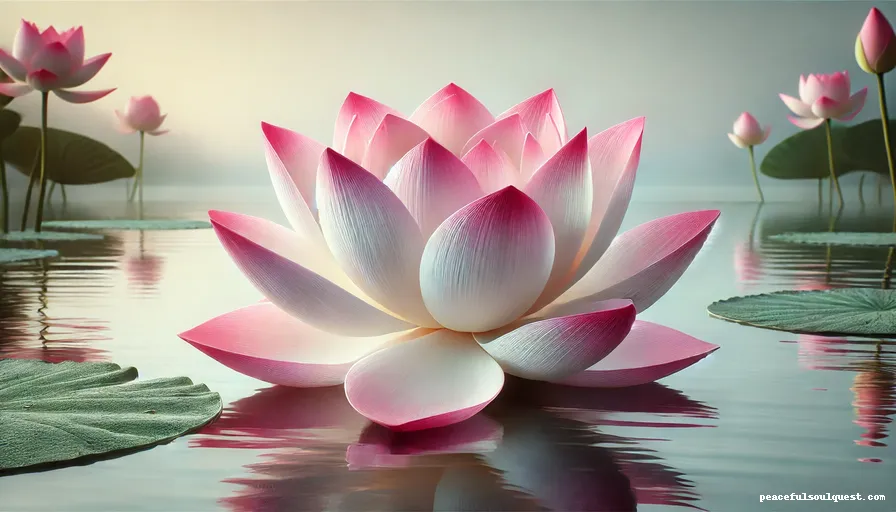
In Buddhism, the Lotus Flower is a powerful symbol of purity and gratitude. Despite growing in muddy waters, the lotus blooms beautifully, symbolizing the emergence of pure thoughts and actions from a grateful heart.
5. Swastika (Hinduism)
In Hinduism, the Swastika, though misunderstood in the West, symbolizes good fortune and gratitude towards the divine.
6. Yin-Yang (Taoism)

The Yin-Yang symbol in Taoism represents balance and harmony, reflecting gratitude for the equilibrium in life. These symbols illustrate how gratitude is deeply intertwined with spirituality and the pursuit of inner peace in Eastern traditions.
Western Traditions
Western cultures have a rich history of expressing gratitude through symbols that have been passed down through generations.
7. Heart (Christianity)

One of the most prominent symbols in Christianity is the heart. The heart stands as a prominent Symbol of Gratitude, embodying love, kindness, and emotional connections.
It’s a powerful reminder that expressing gratitude strengthens relationships and builds a supportive community.
8. Turkey (Thanksgiving in the United States)

During Thanksgiving in the United States, the turkey is a central symbol. This tradition began with the early settlers who celebrated their first successful harvest by sharing a meal.
The turkey, as a symbol, represents abundance and gratitude for the earth’s bounty. It’s a reminder of the importance of being thankful for the food we have and the efforts of those who cultivate it.
9. Harvest Festival Symbols (European cultures)

In European cultures, the Harvest Festival is a time when communities come together to celebrate the crops they’ve harvested. Symbols like the cornucopia and sheaves of wheat are commonly used during these festivals.
The cornucopia, a classic Symbol of Gratitude, often brims with fruits and grains, representing the earth’s abundant gifts. These symbols are deeply rooted in the history of Western cultures and continue to be significant in today’s celebrations.
African Traditions
In African cultures, gratitude is often expressed through rich symbolism found in art, rituals, and traditional practices.
10. Adinkra Symbols (West Africa, e.g., Duafe)

The Adinkra symbols from West Africa are particularly notable. These symbols are used in fabric designs, pottery, logos, and more, each carrying deep meanings.
For example, the Duafe symbol, which represents feminine qualities such as patience and nurturing, is often associated with gratitude.
It reflects the appreciation for the supportive and caring nature of women in society.
11. Baobab Tree (African traditions)

The Baobab Tree, known as the “Tree of Life,” is another powerful symbol in African traditions. This tree is revered for its ability to store water and provide food and shelter in harsh climates.
It symbolizes life, strength, and gratitude for the sustenance it provides. In many African communities, rituals involving the Baobab Tree are performed to express gratitude to the earth and the ancestors for the life-giving resources.
These symbols are not just artistic expressions; they are integral to the cultural identity and spiritual practices in African societies. They serve as daily reminders of the importance of gratitude and the interconnectedness of all living things.
Asian Traditions
Asian cultures are rich in symbols that convey deep meanings of gratitude.
12. Koinobori (Japanese culture)

In Japan, the Koinobori, or carp streamers, are used to express gratitude for children’s health and growth.
These colorful streamers are displayed during Children’s Day, symbolizing strength, perseverance, and the parents’ gratitude for their children’s well-being.
The carp, known for swimming upstream against strong currents, represents the resilience and determination needed to overcome life’s challenges. This symbol reflects the deep appreciation for the strength and vitality of the younger generation.
13. Bamboo (Chinese culture)

In Chinese culture, bamboo is a significant symbol of resilience and gratitude. Bamboo is strong yet flexible, bending without breaking under pressure.
This quality is a metaphor for the human spirit’s ability to endure hardships with grace and gratitude. In times of adversity, bamboo serves as a reminder to remain thankful for life’s challenges and the growth that comes from them.
These symbols are deeply embedded in Asian cultures and are used in various aspects of life, from daily rituals to major celebrations. They emphasize the value of gratitude and the importance of acknowledging the positive aspects of life, even in difficult times.
Cultural Symbols of Gratitude
| Culture | Symbol | Meaning |
|---|---|---|
| Greek | Cornucopia | Abundance and gratitude for the harvest |
| Native American | Eagle Feather | Strength and gratitude |
| Egyptian | Scarab Beetle | Renewal and gratitude towards the sun |
| Buddhist | Lotus Flower | Purity and gratitude for spiritual growth |
| Hindu | Swastika | Good fortune and gratitude towards the divine |
| Taoist | Yin-Yang | Balance and harmony, reflecting gratitude for life |
| African | Baobab Tree | Life, strength, and gratitude for sustenance |
| Japanese | Koinobori (Carp Streamers) | Strength, perseverance, and gratitude for children |
| Chinese | Bamboo | Resilience and gratitude in the face of adversity |
Common Symbols of Gratitude in Modern Times
Natural Elements as Symbols
Nature offers an abundant array of symbols that represent gratitude, each carrying deep meanings that resonate across cultures.
Nature has always been a source of inspiration for Symbols of Gratitude. Many natural elements are used to represent different aspects of gratitude, each carrying its unique meaning.
14. Sunflower

One of the most recognizable Symbols of Gratitude is the sunflower. Sunflowers are known for their bright, cheerful appearance and their ability to turn towards the sun.
This trait, known as heliotropism, is often recognized as one of the key Symbols of Gratitude, representing loyalty and positivity.
Sunflowers remind us to look towards the positive aspects of life and be thankful for the light and warmth that sustains us.
15.Trees

Trees are another powerful symbol of gratitude. They represent strength, growth, and renewal, all of which are important aspects of a grateful mindset.
Different trees have different symbolic meanings; for example, the oak tree is a symbol of strength and endurance, while the willow tree represents flexibility and adaptability.
These qualities remind us to be grateful for our inner strength and the ability to grow and renew ourselves.
16. Water

Water is a universal symbol of life and purity. It is often associated with cleansing and renewal, making it a perfect Symbol of Gratitude.
Water, a universal Symbol of Gratitude, is often used in rituals to symbolize thankfulness for life-sustaining resources. Whether it’s a flowing river or a serene lake, water reminds us to be thankful for the purity and life it provides.
17. Rainbows

Rainbows are among the most awe-inspiring natural Symbols of Gratitude. Rainbows have been associated with hope and positivity, appearing after storms as a reminder that light follows darkness.
They symbolize the beauty and blessings that come after difficult times, making them a powerful representation of gratitude.
When we see a rainbow, it’s a moment to pause, reflect, and express thanks for the good things in life, even after challenges.
18. Stars (Symbol of guidance and wonder)

Another significant natural symbol is stars. Stars have been admired for centuries, representing guidance, wonder, and the vastness of the universe. Looking up at the stars can evoke a sense of awe and gratitude for our place in the cosmos.
Stars are revered as Symbols of Gratitude in many cultures, representing the vital connection between earth and the heavens from the universe.
19. Ocean

The ocean is another profound Symbol of Gratitude. The ocean’s vastness, depth, and endless flow are metaphors for abundance, life, and the continuous cycle of giving and receiving.
Many cultures regard the ocean as a source of life and a symbol of gratitude for the resources it provides.
The rhythmic waves serve as a reminder of the balance between taking and giving, urging us to express gratitude for the abundance in our lives.
20. Sweet Peas
Sweet peas symbolize blissful pleasure and appreciation, making them perfect for expressing gratitude.
21. Freesias

Freesias, with their delicate fragrance, represent innocence, friendship, and gratitude.
22. Bird of Paradise

Meanwhile, the Bird of Paradise flower, known for its exotic beauty, symbolizes joy, freedom, and thankfulness.
These flowers are often given as gifts to express deep appreciation and gratitude, highlighting the role of nature in conveying our most heartfelt emotions.
Flowers as Symbols of Gratitude
| Flower | Meaning |
|---|---|
| Sunflowers | Loyalty, positivity, and gratitude |
| Sweet Peas | Blissful pleasure and appreciation |
| Freesias | Innocence, friendship, and gratitude |
| Bird of Paradise | Joy, freedom, and thankfulness |
| Pink Roses | Gratitude and admiration |
| Lotus Flower | Purity, resilience, and spiritual gratitude |
Objects and Gestures
Symbols of gratitude extend beyond nature to everyday objects and gestures that carry deep meanings.
23. Hands in Prayer Position (Anjali Mudra)

One of the most universally recognized gestures is the hands in prayer position. This gesture, known as the Anjali Mudra in many Eastern traditions, symbolizes humility, reverence, and gratitude.
When we bring our hands together at the heart, it’s a physical expression of appreciation and respect. This gesture is used in meditation, prayer, and as a greeting, serving as a constant reminder to be grateful for the blessings in our lives.
24. Open Hand
The open hand universally represents one of the essential Symbols of Gratitude, signifying giving and receiving.
It represents the act of giving and receiving blessings, which is central to the practice of gratitude. An open hand signifies openness, generosity, and the willingness to share what we have with others.
It’s a reminder that gratitude is not just about feeling thankful, but also about expressing it through acts of kindness and generosity.
25. Candles
Lighting candles is a simple yet meaningful act that symbolizes illumination and warmth. In many cultures, lighting a candle is a way to express gratitude and bring light into darkness.
The flickering flame represents the warmth and light that gratitude brings into our lives, dispelling negativity and fostering a positive atmosphere.
Candles are often used in religious and spiritual rituals as symbols of gratitude for the divine light and guidance.
26. Gifts and Flowers

Gifts and flowers are traditional symbols of appreciation and gratitude that have been used for centuries. Giving someone a carefully chosen gift or a bouquet of flowers is a tangible way to express thankfulness.
Different flowers carry different meanings; for example, pink roses symbolize gratitude and admiration, while sweet peas represent blissful pleasure and appreciation.
These gestures, though simple, have a profound impact, as they convey sincere gratitude and strengthen the bonds between people.
27. Hugs

Hugs serve as some of the most intimate Symbols of Gratitude, expressing personal warmth and appreciation. A hug is a physical expression of warmth, comfort, and appreciation.
It’s a way to show someone how much they mean to you, without needing to say a word. In many cultures, a hug is seen as a gesture of support and gratitude, reinforcing emotional connections and spreading positive energy.
28. Bowing

Finally, bowing is a gesture of respect and gratitude in many Eastern cultures. In Japan, bowing is a common way to express gratitude, respect, and humility.
It’s a physical manifestation of one’s acknowledgment and appreciation of others, often used in greetings, farewells, and rituals. Bowing serves as a powerful reminder of the importance of humility and gratitude in human interactions.
Gratitude in Religious and Spiritual Practices
Gratitude Symbols in Buddhism
Buddhism, with its rich symbolism, provides many ways to express and embody gratitude.
29. Bodhi Tree (Buddhism)

One of the most prominent symbols is the Bodhi Tree. The Bodhi Tree is revered as the place where Siddhartha Gautama attained enlightenment and became the Buddha.
It symbolizes wisdom, spiritual awakening, and gratitude for the enlightenment that can be achieved through perseverance and mindfulness.
For Buddhists, the Bodhi Tree is a powerful reminder to be thankful for the guidance and wisdom that leads to spiritual growth.
30. Dharma Wheel (Buddhism)
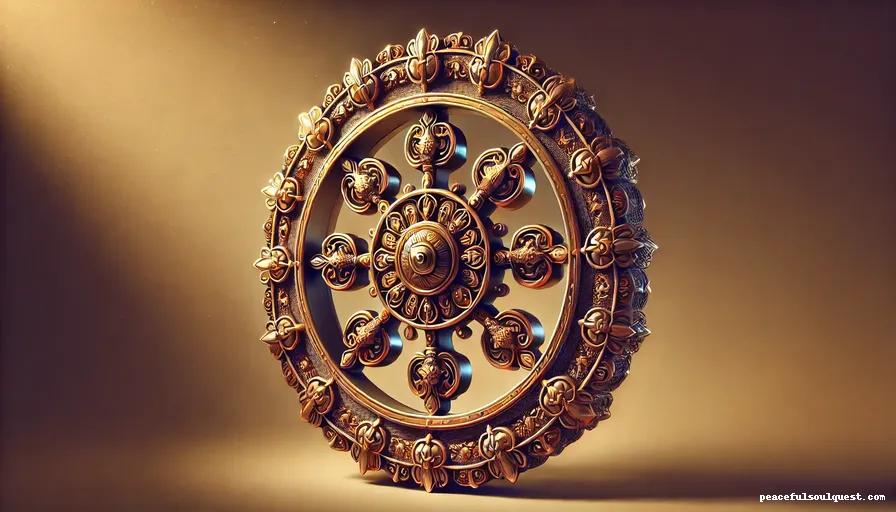
Another significant symbol is the Dharma Wheel or Dharmachakra. This wheel represents the Buddha’s teachings and the path to enlightenment.
Gratitude is a central tenet in Buddhism, as it encourages practitioners to be thankful for the Dharma – the teachings that guide them towards a life of compassion, wisdom, and peace.
The Dharma Wheel serves as a reminder to express gratitude for the spiritual journey and the lessons learned along the way.
31. Eight Auspicious Symbols (Buddhism, e.g., Treasure Vase, Conch Shell)

The Eight Auspicious Symbols in Buddhism also carry meanings related to gratitude.
For instance, the Treasure Vase symbolizes spiritual abundance and the gratitude that comes with recognizing the richness of spiritual teachings.
The Conch Shell, which is often used in religious ceremonies, represents the spread of the Buddha’s teachings and the gratitude for the wisdom that guides us.
Christian Symbols of Gratitude
In Christianity, Symbols of Gratitude are deeply intertwined with the faith’s core beliefs and practices.
32. Cross (Christianity)

The Cross is the most recognizable symbol, representing the ultimate sacrifice made by Jesus Christ.
For Christians, the Cross is a powerful symbol of gratitude for the salvation and eternal life granted through Christ’s sacrifice. It serves as a daily reminder of the importance of living a life filled with gratitude, love, and humility.
33. Fish (Ichthys) (Christianity)
The Fish symbol, also known as the Ichthys, was used by early Christians as a secret sign to identify one another during times of persecution.
It represents faith and gratitude for the protection and guidance provided by God. The Fish is often seen as a symbol of thankfulness for the spiritual nourishment that faith provides.
34. Flame/Candle (Christianity)

The Flame or Candle is another important symbol in Christianity, representing the light of Christ and the warmth of divine love.
Lighting a candle in prayer is a common practice that symbolizes gratitude for God’s presence and guidance in one’s life. The flickering flame serves as a reminder to remain thankful for the light and love that guide us through life’s challenges.
Hindu Symbols of Gratitude
In Hinduism, gratitude is expressed through various symbols and rituals that honor the divine and the natural world.
35. Prayer Beads (Mala)

Prayer beads, or mala, are commonly used in meditation and prayer. Each bead represents a mantra or prayer, and as practitioners move through the beads, they express gratitude for each blessing in their lives.
This practice helps cultivate a mindful state of thankfulness and reinforces the importance of gratitude in daily spiritual practice.
36. Incense
Incense is another symbol of gratitude in Hinduism, often used during puja (worship) ceremonies. Burning incense is a way to purify the environment and offer gratitude to the divine for blessings received.
The fragrant smoke that rises symbolizes the prayers and gratitude that ascend to the heavens, creating a sacred connection between the earthly and the divine.
37. Cow

The cow is revered in Hinduism as a symbol of life and sustenance. Cows provide milk, a vital source of nourishment, and are seen as generous beings that give more than they take.
As a result, the cow is a powerful symbol of gratitude for the life-giving resources it provides. In many Hindu rituals, cows are honored and thanked for their contributions to human life.
Islamic Symbols of Gratitude
In Islam, gratitude is a central aspect of worship and daily life, expressed through various symbols and practices.
38. Crescent Moon and Star

The Crescent Moon and Star is one of the most recognized symbols of Islam, representing reflection, guidance, and gratitude for the divine light that illuminates the path of believers.
The crescent moon, with its growing light, symbolizes the growth of faith and the importance of being thankful for the guidance provided by Allah.
39. Prayer Mats

Prayer mats are also significant symbols in Islam. These mats are used during the five daily prayers (Salah) and symbolize humility and gratitude.
Each time a Muslim kneels on the prayer mat, they express gratitude to Allah for the countless blessings in their lives.
The act of prayer itself is an expression of thankfulness, as it acknowledges the greatness of Allah and the blessings bestowed upon the believer.
Unique and Lesser-Known Symbols of Gratitude
Cultural Symbols of Gratitude
40. Tibetan Prayer Flags (Tibetan Buddhism)

Gratitude is expressed in many unique and lesser-known ways across different cultures. For example, Tibetan Prayer Flags are used in Tibetan Buddhism to spread blessings, compassion, and gratitude to all beings.
These flags, inscribed with prayers and mantras, are hung in high places where the wind can carry their blessings across the land.
Each time the wind touches a flag, it is believed that the prayers are carried to the heavens, spreading positive energy and gratitude.
41. Hawaiian Sun and Ocean Symbols (Hawaiian culture)
The Hawaiian Sun and Ocean Symbols reflect the deep connection Hawaiians have with nature. The sun and ocean are vital elements in Hawaiian culture, symbolizing life, abundance, and the interconnectedness of all living things.
Expressing gratitude for these natural elements is inherent in Hawaiian traditions, reminding us to appreciate the beauty and bounty of the natural world.
Modern Symbols of Gratitude
In modern times, gratitude is often expressed through new symbols that resonate with contemporary culture.
42. Smiley Face

The Smiley Face has become a universal symbol of happiness, contentment, and light-hearted gratitude.
It’s often used in digital communication to express a quick, cheerful “thank you” or to brighten someone’s day.
While simple, the smiley face effectively conveys a sense of positive energy and appreciation.
43. Gratitude Rocks

Gratitude rocks are another modern symbol of thankfulness. These small stones, often inscribed with words like “gratitude” or “thankful,” serve as personal reminders to focus on the positive aspects of life.
Carrying a gratitude rock in your pocket or placing it somewhere visible can help cultivate a mindset of thankfulness throughout the day.
44. Emojis (Digital communication symbol, e.g., folded hands emoji)

In the digital age, emojis have become a popular way to express gratitude online.
The folded hands emoji is commonly used to convey thanks and appreciation in text messages and social media posts.
While small, these symbols carry significant meaning, making it easy to express gratitude in the fast-paced world of digital communication.
Modern Symbols of Gratitude
| Modern Symbol | Category | Meaning |
|---|---|---|
| Smiley Face Emoji | Digital | Happiness, contentment, and light-hearted gratitude |
| Gratitude Rocks | Personal | Focus on positivity and a reminder to be thankful |
| Gratitude Tattoos | Body Art | Permanent reminder of the importance of thankfulness |
| Folded Hands Emoji | Digital | Expresses thanks and appreciation in communication |
| Gratitude Journal | Lifestyle | Encourages daily reflection and recognition of blessings |
| Lighting Candles | Ritual | Illumination, warmth, and spiritual gratitude |
Gratitude in Art and Design
Symbolism in Tattoos
Tattoos have become a popular way to express personal beliefs, emotions, and values, including gratitude. Gratitude tattoos are often simple yet deeply meaningful, serving as permanent reminders of the importance of thankfulness in one’s life.
Lotus Flower (Buddhism)
One of the most popular designs for gratitude tattoos is the lotus flower. The lotus, which blooms beautifully even in muddy waters, symbolizes purity, resilience, and the power of gratitude to rise above challenges.
This symbol is often chosen by those who have overcome difficult times and wish to express their appreciation for personal growth and transformation.
Heart (Christianity)
Another popular gratitude tattoo is the heart. The heart is a universal symbol of love and appreciation, making it a fitting choice for those who want to carry a reminder of their gratitude for the people and experiences that have shaped their lives.
It’s a simple yet powerful way to express thanks for the love and kindness one has received.
Infinity Symbol
The infinity symbol is also a common choice for gratitude tattoos. It represents the endless nature of gratitude – the idea that thankfulness is not just a fleeting emotion, but a continuous state of being.
This symbol is often paired with words like “thankful” or “grateful” to reinforce the message.
Gratitude in Home Décor
Home décor is another area where Symbols of Gratitude can play a significant role. By incorporating these symbols into your living space, you create an environment that constantly reminds you of the importance of thankfulness.
Hawaiian Quilt Patterns
Hawaiian quilt patterns, for example, often feature nature-inspired designs such as flowers, waves, and fish, symbolizing gratitude for the beauty of the natural world.
These patterns are created with care and precision, reflecting the appreciation for life’s simple yet profound blessings.
Gratitude Journals
Gratitude journals are another popular home décor item. These journals are designed to encourage daily reflection on the things you are thankful for.
By keeping a gratitude journal, you cultivate a habit of noticing and appreciating the positive aspects of your life.
Many gratitude journals are beautifully designed, making them a meaningful and aesthetically pleasing addition to any home.
Wall Art and Symbols
Wall art and symbols are also effective ways to incorporate Symbols of Gratitude into your home. Inspirational quotes, symbols, and images that represent gratitude can be displayed prominently in your living space.
These Symbols of Gratitude act as visual reminders, ensuring that a grateful mindset remains central in your daily life, fostering a positive and appreciative atmosphere in your home.
Symbolism in Jewelry
Jewelry has long been a cherished way to express personal beliefs, emotions, and values, including gratitude.
Wearing a piece of jewelry that symbolizes gratitude allows you to carry a reminder of your thankfulness wherever you go.
This practice is not only meaningful but also stylish, combining aesthetics with deep personal significance.
Gratitude Bracelets and Necklaces

Gratitude bracelets and necklaces are popular items that people choose to represent their thankfulness. These pieces often feature symbols like the heart, infinity symbol, or lotus flower, each of which carries different connotations of gratitude.
For instance, a heart symbolizes love and appreciation, making it a fitting representation of gratitude for loved ones. The infinity symbol, on the other hand, represents the endless nature of gratitude – a continuous loop of thankfulness that never ends.
Custom designs in gratitude jewelry are becoming increasingly popular as people seek to create unique pieces that resonate with their personal experiences.
These custom pieces might include specific engravings, such as the word “grateful” or a date that holds special significance.
Others might incorporate symbols that have personal meaning, like a tree symbolizing growth and renewal, or a star to represent guidance and inspiration.
By wearing these symbols, individuals can keep their gratitude close to their heart, both literally and figuratively.
The Impact of Practicing Gratitude in Daily Life
Psychological Benefits of Gratitude
Practicing gratitude has been shown to have numerous psychological benefits. Research indicates that regularly expressing gratitude can enhance well-being, increase happiness, and reduce stress.
Gratitude helps shift focus from negative emotions to positive ones, promoting a more optimistic outlook on life.
When we practice gratitude, we foster a sense of contentment and satisfaction, which can lead to improved mental health and resilience.
Practical Tips for Cultivating Gratitude
Cultivating gratitude can be as simple as incorporating a few daily practices into your routine. One effective method is daily gratitude journaling.
By writing down a few things you’re thankful for each day, you train your mind to notice and appreciate the positives in life. Another approach is gratitude meditation.
This practice involves focusing on feelings of thankfulness during meditation, helping to deepen your sense of appreciation and mindfulness.
Integrating gratitude symbols into your daily life can also enhance your practice. Surrounding yourself with visual reminders, like gratitude rocks or wall art, can help keep a grateful mindset at the forefront of your thoughts.
Integrating Gratitude Symbols into Daily Life
Incorporating gratitude symbols into your daily routine is a simple yet powerful way to maintain a grateful mindset.
Consider creating rituals that include lighting candles in the morning or evening, reflecting on the light and warmth they bring, and expressing gratitude for the positive aspects of your day.
You can also place gratitude rocks in visible areas around your home or workspace as reminders to appreciate the little things in life.
Surrounding yourself with symbols like wall art or jewelry that represents gratitude can keep you focused on the importance of thankfulness throughout the day.
For example, wearing a gratitude bracelet or necklace not only serves as a fashionable accessory but also as a personal reminder of the gratitude you carry with you.
Creating daily practices that involve these symbols helps integrate gratitude into your routine, making it a natural part of your life.
Final Thoughts
Gratitude is a powerful emotion that can be expressed through a variety of symbols and practices. Whether it’s through religious symbols like the Bodhi Tree or Cross, cultural symbols like Tibetan Prayer Flags, or modern symbols like emojis and gratitude rocks, these symbols remind us of the importance of being thankful in our daily lives.
By integrating these Symbols of Gratitude into our homes, routines, and personal expressions, we cultivate a mindset of thankfulness that enhances our overall well-being.
Gratitude not only benefits us personally but also strengthens our connections with others and creates a more positive environment around us.
Conclusion
In Western, African, and Asian cultures, gratitude is expressed through rich and meaningful symbols.
These symbols remind us of the importance of being thankful for the good things in life.
Whether it’s through a sunflower, a prayer gesture, or an open hand, these symbols of gratitude carry deep meanings that resonate across different cultures and societies.
They serve as daily reminders to practice gratitude, fostering a positive mindset and strengthening our connections with others.
By understanding and incorporating these symbols into our lives, we can cultivate a deeper sense of thankfulness and appreciation.
